Unpacking the AI Card Model Framework: A Comprehensive Guide to Advanced AI Development
23 June 2025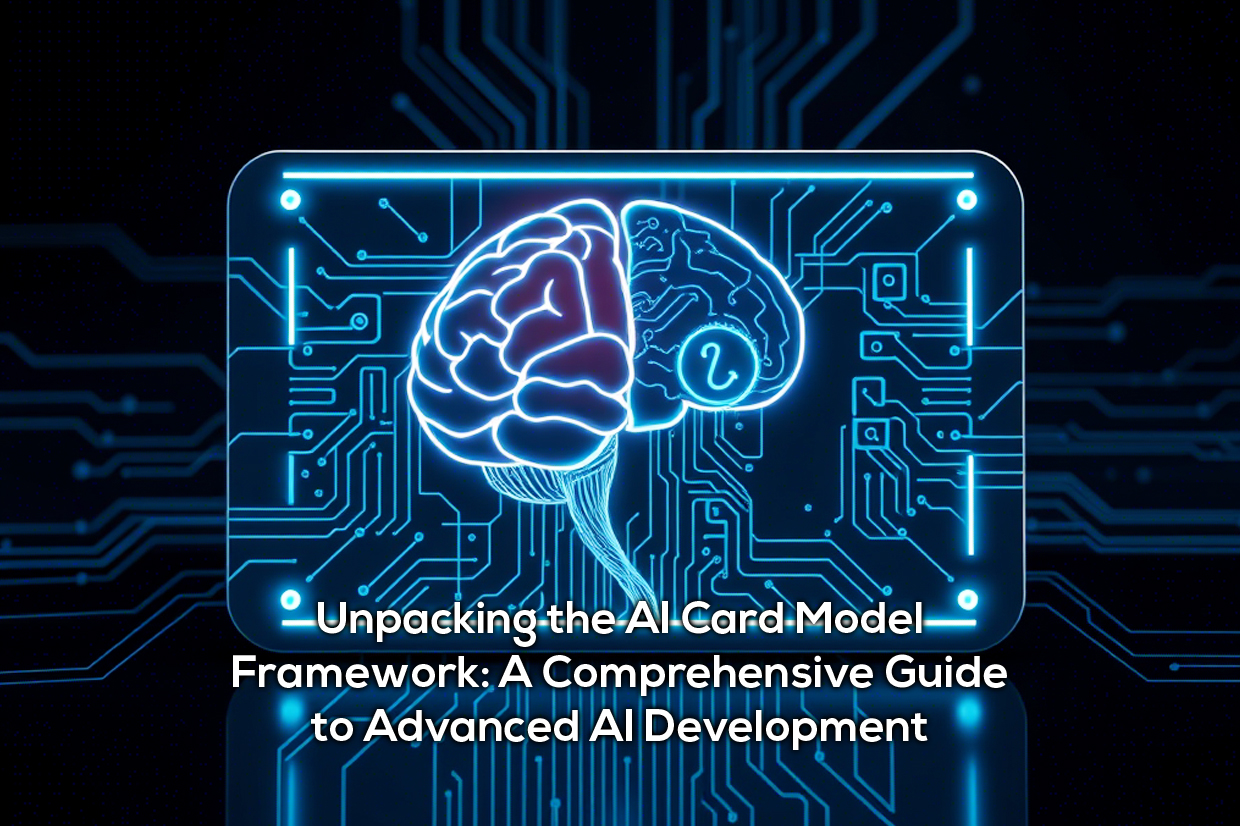
In the rapidly evolving landscape of artificial intelligence, the journey from a nascent idea to a truly capable and responsible AI system is complex and multifaceted. It demands more than just technical prowess; it requires a structured approach to problem definition, development, and ethical consideration. This is precisely where the AI Card Model Framework offers invaluable guidance.
This innovative framework presents a comprehensive, seven-level progression designed to guide developers, strategists, and practitioners through every stage of AI development. It moves systematically from the foundational principles of project definition to the highest echelons of AI wisdom, encompassing a rich set of 50 distinct concepts, or "cards," along the way. Each level within this hierarchy builds meticulously upon the last, ensuring a robust and holistic understanding of AI capabilities and responsibilities. By adhering to this structured approach, organisations can cultivate AI systems that are not only intelligent and efficient but also inherently more reliable, adaptable, and ethically sound. Let's embark on a detailed exploration of each level of this fascinating framework.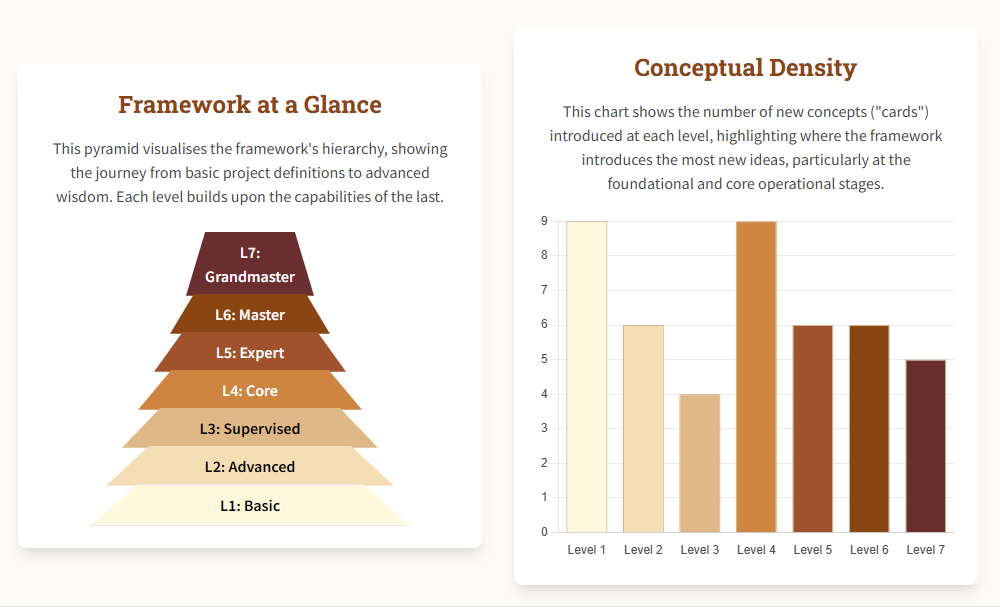
Level 1: Basic Card Set – The Foundations of AI Initiatives
The initial phase of any successful AI project necessitates a crystal-clear understanding of its core elements. The Basic Card Set serves as this fundamental bedrock, establishing the essential parameters required to define and contextualise the AI initiative. Without these foundational building blocks, even the most brilliant technical execution can falter due to a lack of direction or misaligned expectations.
Aim: This represents the broad, overarching purpose or the long-term strategic goal that the AI system is ultimately designed to achieve. It defines the 'why' behind the entire endeavour. For example, an AI project's aim might be "to revolutionise customer service interactions within the retail sector."
Objective: Unlike the broad aim, objectives are specific, measurable, achievable, relevant, and time-bound (SMART) targets that directly contribute to the successful realisation of the aim. They provide concrete milestones for progress tracking. Following our example, an objective could be "to reduce average customer query resolution time by 30% using an AI chatbot within the next six months."
Block: This card identifies any potential obstacle, constraint, or critical dependency that could impede or prevent the progress of the AI project. Recognising blocks early allows for proactive mitigation strategies. A block might be "lack of high-quality, pre-labelled historical customer interaction data for training."
Background: Understanding the relevant historical context, existing knowledge, or prior work related to the problem domain is crucial. This prevents re-inventing the wheel and helps leverage existing insights. For our customer service AI, the background would include "analysis of previous manual customer service workflows and common pain points."
Role: This defines the specific function, responsibility, or persona that the AI system is intended to embody or perform within its operational environment. Clearly defining the AI's role guides its design and behaviour. The AI's role might be "an empathetic first-line customer support agent, handling routine enquiries."
Constraint: These are limitations or restrictions that must be strictly adhered to throughout the project lifecycle. Constraints can be budgetary, temporal, technological, or regulatory. An example constraint is "the AI chatbot must operate within existing cloud infrastructure limits to maintain data residency compliance."
Assumption: An assumption is a belief or premise taken as true without definitive proof, upon which plans or models are based. While necessary for planning, assumptions carry inherent risks if proven false. A key assumption could be "users will be comfortable interacting with an automated system for their basic service needs."
Deliverable: This refers to a tangible output, product, or measurable result that the AI system or the project itself must produce upon completion of a phase or the entire project. For instance, a deliverable could be "a functional prototype of the AI chatbot capable of answering FAQs for product returns."
Demand: This card signifies a specific requirement, expectation, or request originating from a key stakeholder, user group, or the operational environment itself. Demands often drive specific features or performance benchmarks. A demand might be "the chatbot must seamlessly hand over complex queries to a human agent within two minutes."
Want to learn how to integrate AI into your Marketing and Business? Click and sign up today!

Level 2: Advanced Card Set – Deepening Context and Feedback Loops
Moving beyond fundamental definitions, the Advanced Card Set introduces more nuanced aspects critical for an AI system's effective deployment and continuous improvement. This level focuses on gaining a deeper comprehension of the operational environment, stakeholder perceptions, and the early indicators of success or failure. It emphasises integrating feedback and broader contextual understanding into the AI's development lifecycle.Complaint: This identifies expressed dissatisfaction, issues, or negative feedback received from users or stakeholders. Addressing complaints is vital for iterative improvement and user acceptance. For our chatbot, a complaint might be "the chatbot repeatedly asks for information I've already provided."
Audience: Understanding the specific group of people or other systems with whom the AI will interact is paramount. Tailoring the AI's interaction style, language, and capabilities to its intended audience enhances usability. The chatbot's audience includes "tech-savvy millennials and older, less digitally native customers."
Domain: This defines the specific field of knowledge, industry, or area of expertise within which the AI system operates. A deep understanding of the domain ensures the AI's responses are accurate and relevant. The chatbot's domain is "retail customer support for electronics and home appliances."
Issue: A significant problem, point of contention, or critical area that requires urgent resolution or careful management is an 'issue'. Issues often arise during testing or initial deployment. An issue could be "the chatbot occasionally misinterprets technical product codes, leading to incorrect recommendations."
KPI (Key Performance Indicator): While objectives define targets, KPIs are the measurable values that demonstrate how effectively the AI system is achieving its objectives and broader business goals. They provide a quantitative lens on performance. A KPI for the chatbot is "Customer Satisfaction (CSAT) score, measured after each resolved interaction."
Loss: This card represents the negative consequences or impact (e.g., financial, reputational, operational) that could arise from a failure, error, or an undesirable outcome of the AI system. Understanding potential losses helps in risk assessment. An example loss might be "a decline in brand trust due to frustrating chatbot interactions leading to customer churn."
Level 3: Supervised Card Set – Performance Measurement and Guided Cognition
The Supervised Card Set signifies a transition towards more precise performance metrics, structured thought processes, and an awareness of differing viewpoints, often guided by human oversight. This level is crucial for monitoring the AI's effectiveness, refining its reasoning, and ensuring its alignment with desired outcomes. It introduces concepts that facilitate a more controlled and insightful development process.
ARR (Annual Recurring Revenue) / LRR (Logo Retention Rate): These are critical business metrics, particularly relevant for AI solutions integrated into commercial products or services. ARR (Annual Recurring Revenue) measures the predictable revenue generated each year from AI-powered subscriptions or services. LRR (Logo Retention Rate) tracks the percentage of customers retained, often influenced by AI-driven engagement or service quality. For a subscription-based AI analytics tool, improved LRR due to AI-driven insights directly translates to business success.
Let's Think Step By Step: This is a powerful cognitive prompt that encourages the AI to break down complex problems into logical, sequential sub-problems. It mirrors human analytical reasoning and is vital for tasks requiring transparent decision-making or multi-stage processing. An AI diagnosing a medical condition might use this to explain its rationale, detailing each symptom evaluation leading to a diagnosis.
Perspective: This card refers to understanding or adopting a particular attitude towards, or way of regarding, something; a distinct point of view. For AI, it means being able to process information or frame solutions from different angles, which is critical for fairness and comprehensiveness. For instance, an AI assisting with urban planning might analyse a proposed development from environmental, economic, and social perspectives.
Success Criteria KPI: These are specific, quantifiable metrics that precisely define what a successful outcome looks like for a particular initiative, feature, or AI iteration. They refine broader KPIs by setting clear thresholds. For our customer service chatbot, a Success Criteria KPI might be "achieve a first-contact resolution rate of 75% for common enquiries."
Still wondering how to use AI in your content creation? Join our AI for Business & Marketing course and get started today!
Level 4: Core Operational Set – The AI's Inner Workings Explained
The Core Operational Set delves into the internal mechanisms and logic that fundamentally govern an AI's behaviour. These nine concepts are deeply interconnected, forming the essential processing chain from raw input to generated output. Understanding this level is key to designing AI systems that are predictable, controllable, and debuggable. This set describes how the AI perceives, processes, and responds to its environment at a functional level.HANDLERS: These are specific routines, modules, or functions within the AI system designed to process or respond to particular types of input, events, or exceptions. Think of them as dedicated mini-programmes. In a smart home AI, a light-control-handler would manage all commands related to lighting.
INTERACTION: This describes the dynamic process of communication and reciprocal action between the AI system and its users, other systems, or its operational environment. It defines the 'how' of engagement. For our chatbot, the interaction involves natural language dialogue, including recognising tone and intent.
KEYWORDS: These are significant terms, phrases, or entities that trigger specific AI functions, help categorise content, or are critical for information retrieval. They are the AI's initial hooks into understanding input. For a news summarisation AI, keywords might include "politics," "economy," or specific company names.
PATTERN: This refers to a discernible regularity, trend, or recurring structure in data, behaviour, or events that the AI can learn, recognise, or predict. Pattern recognition is fundamental to machine learning. An AI detecting financial fraud might identify unusual spending patterns.
RELEVANCE: This is the quality or state of being closely connected, appropriate, or pertinent to the matter at hand or a user's query. Ensuring relevance is crucial for an AI to provide useful and accurate responses. A search engine AI's primary task is to rank results by their relevance to the search query.
RESPONSE: This is the output, action, or communication produced by the AI system in reaction to an input, query, or internal stimulus. It's the AI's answer or action. A navigation AI's response might be "turn left at the next junction."
RULES: These are explicit, predefined conditions or logical statements that dictate the AI's behaviour, decision-making, or data processing. Rules offer a deterministic layer of control within AI systems. For a security AI, a rule might be: "If unauthorised login attempts > 5 within 1 minute, then lock account."
SCENARIOS: These are hypothetical situations, sequences of events, or use cases used to test, plan for, or understand the AI's behaviour under various conditions. Scenarios are vital for robust development and risk assessment. An autonomous vehicle AI would be tested against thousands of driving scenarios.
STAKES: This card refers to the potential gains (benefits) or losses (risks, harms) associated with a particular decision, action, or outcome generated by the AI. Understanding stakes informs risk management and ethical considerations. High stakes are involved in an AI diagnosing a life-threatening illness.

Level 5: Expert Card Set – Cultivating Critical Analysis and Self-Awareness
The Expert Card Set marks a significant leap in AI capability, moving beyond simple data processing to critical analysis, profound understanding, and even a degree of self-awareness. A truly 'expert' system doesn't just perform tasks; it understands its performance, engages in deeper reasoning, and considers the broader implications of its actions. This level cultivates cognitive abilities that are vital for sophisticated and reliable AI.Evaluation: This involves the systematic and objective assessment of the AI's performance, effectiveness, reliability, and impact against predefined criteria. Continuous evaluation is key to an AI's long-term success and trustworthiness. An AI-powered marketing campaign tool would undergo constant evaluation of its conversion rates and ROI.
Multi-Perspective Analysis: This is the ability of an AI to examine a problem, situation, or dataset from several different viewpoints, stakeholder positions, or theoretical frameworks. It's crucial for achieving balanced and fair outcomes. An AI assisting in policy-making might analyse a new regulation from economic, social, and environmental perspectives.
Problem-Solving: This represents the comprehensive process of identifying, analysing, understanding, and resolving complex or difficult issues using reasoning and learned knowledge. It's the core of an AI's utility. An AI designed for scientific discovery might problem-solve by suggesting new chemical compounds based on desired properties.
Questioning: This is the act of generating and posing pertinent questions, either internally (for its own reasoning) or to users, to gain clarity, uncover assumptions, or explore deeper aspects of a problem. An advanced diagnostic AI might ask a doctor clarifying questions about a patient's symptoms.
Ethical Consideration: This card demands conscious reflection on and adherence to moral principles and values that should guide the AI's design, behaviour, and societal impact. It is paramount for responsible AI development. An AI managing loan applications must ensure its decisions are free from demographic biases and fair to all applicants.
Metacognition: Often described as 'thinking about thinking', this is the awareness and understanding of one's own (or the AI's own) thought processes, learning, and reasoning capabilities. A metacognitive AI might recognise when it lacks sufficient confidence in an answer and flag it for human review.
Level 6: Master Card Set – Deep Analytical and Systemic Understanding
At the Master Card Set, the AI possesses truly deep analytical capabilities, enabling it to dissect complex realities, understand intricate interdependencies, and consider broader, often unseen, implications. This level moves beyond mere data correlation to sophisticated systemic understanding and advanced forms of causal reasoning. A 'master' AI grasps the bigger picture and the underlying mechanisms at play.
Bias Identification: This capability involves recognising, understanding, and actively working to mitigate systematic errors, predispositions, or unfair leanings within the AI's data, algorithms, or outputs. This is crucial for building equitable and fair AI systems. An AI assisting in hiring must identify and correct any gender or racial biases present in historical applicant data.
System Thinking: This is the holistic approach of understanding how individual components within a larger, complex system interact, influence each other, and contribute to the overall behaviour of that system. It involves seeing connections and feedback loops. An AI optimising a smart city's traffic flow would employ system thinking, considering road networks, public transport, pedestrian movement, and environmental impacts.
Counterfactual: This is the ability to reason about what might have happened if certain conditions or past events had been different. It involves exploring alternative histories to understand causality more deeply and to evaluate the impact of decisions not taken. A financial AI might ask, "If interest rates had remained stable last quarter, how would our portfolio have performed?"
Causal Analysis: This is the rigorous process of determining the direct cause-and-effect relationships between events, variables, or decisions. It moves beyond mere correlation to identify true drivers. An AI performing root cause analysis for a production line failure would use causal analysis to pinpoint the exact contributing factors.
First Principle: This is the ability to break down complex problems into their fundamental truths or irreducible core elements, building solutions from the ground up rather than relying on analogy or existing solutions. It drives true innovation. An AI designing a novel energy storage solution would start from the basic laws of physics and chemistry, not existing battery designs.
Second Order: This card represents the consideration of indirect, delayed, or non-obvious consequences that arise from initial actions or decisions. It encourages looking beyond immediate results to anticipate broader impacts. An AI recommending a major organisational restructure would assess not just immediate cost savings but also potential long-term impacts on employee morale and innovation.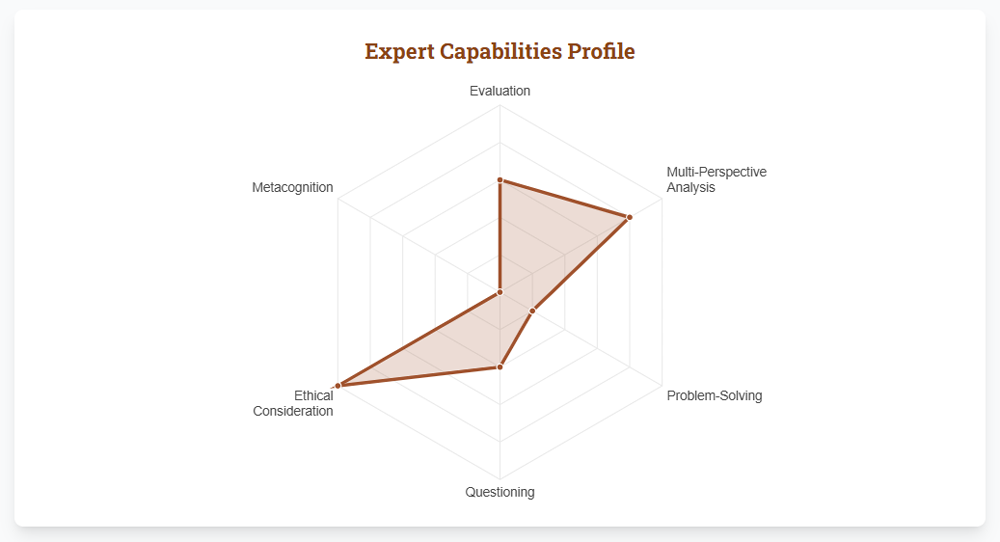
Level 7: Grandmaster Card Set – Wisdom and Ethical Leadership
The Grandmaster Card Set represents the absolute pinnacle of AI capability. At this level, AI systems integrate vast knowledge with profound understanding, accumulated experience, and sound judgement to make decisions that are not merely correct, but also truly beneficial, contextually appropriate, and aligned with broader societal well-being. This is where AI transitions from intelligence to a form of digital wisdom.Complexity Navigation: This is the advanced skill of finding optimal paths, making effective decisions, and achieving goals within highly intricate, dynamic, uncertain, and interconnected environments. It's about thriving in chaos. An AI assisting in global resource allocation during a humanitarian crisis would demonstrate complexity navigation, balancing logistics, urgent needs, political factors, and long-term sustainability.
Moral Scaffolding: This refers to the ability to construct, refine, and apply ethical frameworks, principles, and support structures to guide AI decision-making in morally ambiguous or high-stakes situations. It ensures responsible and justifiable outcomes when faced with dilemmas. An autonomous caregiving AI would utilise moral scaffolding to prioritise patient safety and well-being in complex situations, even when faced with conflicting directives.
Wisdom Integration: This is the highest form of intelligence, combining extensive knowledge, deep understanding, accumulated experience, and sound judgement to make insightful, contextually appropriate, and broadly beneficial decisions. It's the culmination of all preceding levels. An AI advising national policy on climate change mitigation would integrate wisdom from diverse scientific, economic, and social data to propose truly sustainable long-term solutions.
Holistic Reframing: This is the capacity to reinterpret problems or situations from a broader, more inclusive, and systemic perspective. It often reveals entirely new solution spaces or understandings that were not apparent from a narrower view. An AI tasked with optimising urban living might holistically reframe 'transportation' not just as car movements, but as integrated mobility ecosystems encompassing public transport, cycling, and pedestrian flows.
Help Seeking: This is a crucial self-aware capability: the AI recognises its own limitations, actively identifies knowledge gaps, and strategically seeks external assistance, additional information, or human collaboration when needed. It reflects humility and the understanding that even grandmaster AI is part of a larger human-AI ecosystem. An AI developing a new drug might 'seek help' by flagging experimental results that defy current scientific understanding for human researchers to investigate further.
Want to learn how to integrate AI into your Marketing and Business? Click and sign up today!

Conclusion: Towards Truly Intelligent and Responsible AI
The AI Card Model Framework provides an invaluable, structured roadmap for anyone involved in AI, from initial conceptualisation to advanced development and ethical oversight. By systematically addressing each level and its associated cards, we can move beyond building mere algorithms to crafting AI systems that are not only intelligent and efficient but also robust, ethically sound, and capable of demonstrating a profound level of 'wisdom' in their actions.
This framework encourages a thoughtful, multi-faceted approach to AI development, ensuring that our creations contribute positively and responsibly to the future of technology and society. It serves as a reminder that the pursuit of advanced AI is a journey of continuous learning, refinement, and a deep consideration of both technical prowess and societal impact. Adopting such a structured methodology is key to unlocking AI's full potential for good.
Our team at Online Marketing Academy (OMA) has also compiled comprehensive research on Gemini AI here. As we discover what drives results in AI for you, we'll share more findings.




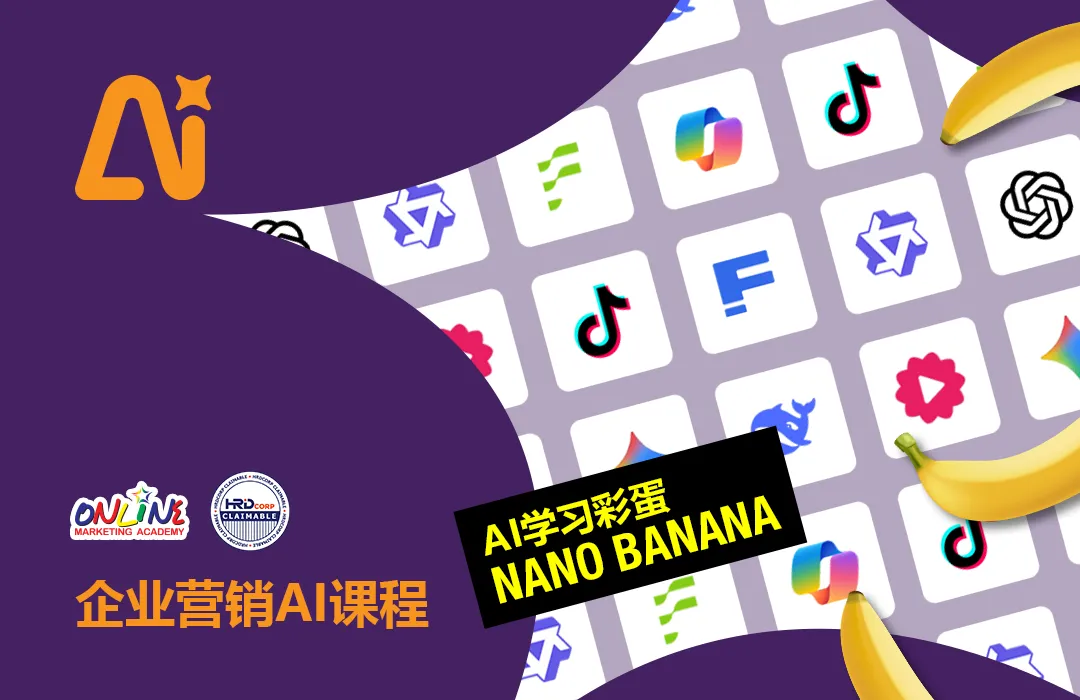
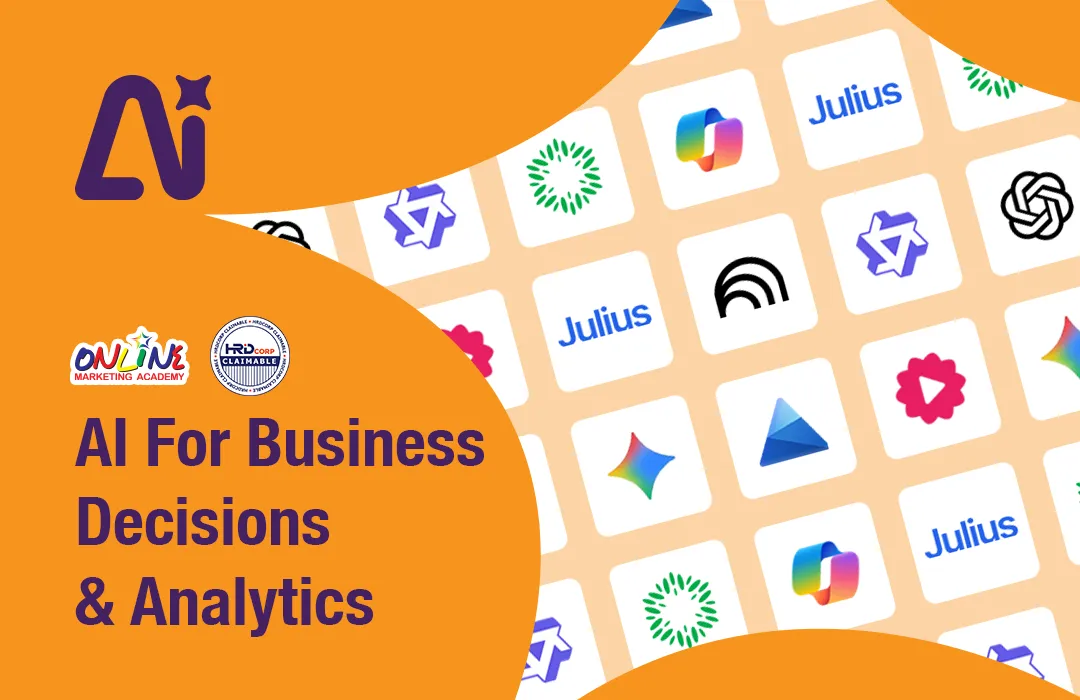
 WhatsApp Us +6011 1144 5462
WhatsApp Us +6011 1144 5462



